Soon going into research and deep processing of cocoa products, Trong Duc Cocoa has created special chocolate, cocoa, etc. products, certified as 4-star OCOP. Trong Duc Cocoa’s products not only conquer the domestic market but have been exported to many countries.

No one clearly knows when the cocoa tree was brought into planting in Vietnam by the French. Some documents show that, before 1954, cocoa trees appeared in some provinces of Southern Vietnam. But due to many reasons, the cocoa tree has not developed as well as some other industrial crops that were also brought from abroad to Vietnam, such as coffee, pepper, cashew, rubber, etc.
In Dong Nai province, cocoa trees began to be cultivated as a commodity product in the 1980s. The climate and soil of Dong Nai province are assessed as suitable for the development of cocoa trees.
By 2003, through the national cocoa development program, Dong Nai called on many businesses in the province to invest in cultivating and consuming cocoa products in the area for export. With the participation of businesses, cocoa farmers in Dong Nai have improved economic efficiency from this crop. Thanks to that, the cocoa tree in Dong Nai has developed, becoming a strong crop in many districts such as Dinh Quan, Tan Phu, Thong Nhat, Cam My, etc.
In that trend, in 2005, Trong Duc Cocoa Company Limited was established, headquartered in Phu Hoa commune, Dinh Quan district, Dong Nai. Immediately after its establishment, Trong Duc Cocoa linked with Dong Nai farmers to develop cocoa trees.
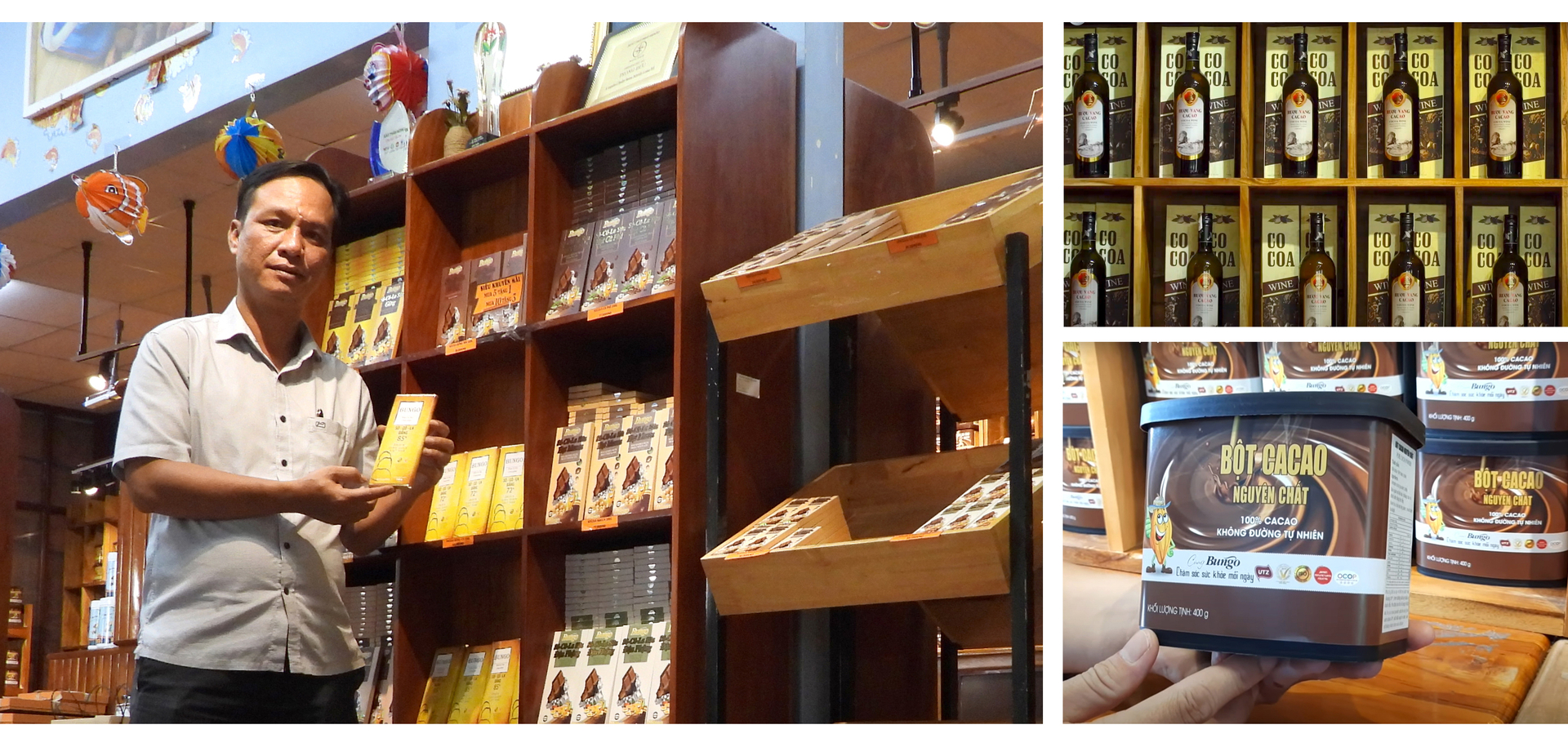
In particular, instead of just exporting cocoa beans like many other businesses, Trong Duc Cocoa soon began to research and find ways to process products from cocoa. Mr. Dang Tuong Khanh, Director of Trong Duc Cocoa, shared that every 10 tons of fresh cocoa fruits will yield about 1 ton of dry beans. If the company exports dry cocoa beans, it will also earn a profit, but if it processes products from those cocoa beans, profits will be higher and more sustainable, and benefits can be shared with farmers.
With that vision, Trong Duc Cocoa was determined to process products from cocoa. Mr. Dang Tuong Khanh said that when starting to deeply process products from cocoa, there were almost no domestic documents on cocoa and chocolate processing. Machinery, equipment, and technology for cocoa processing were also not available. At that time, information and data on the internet were still limited, not as abundant and rich as nowadays.
After a period of time and a lot of effort, Trong Duc Cocoa has found its own formula to successfully process many products, such as chocolate, cocoa powder, cocoa wine, cocoa tea bags, cocoa syrup, etc. Among them, the highlights are chocolate, cocoa powder, and cocoa wine.
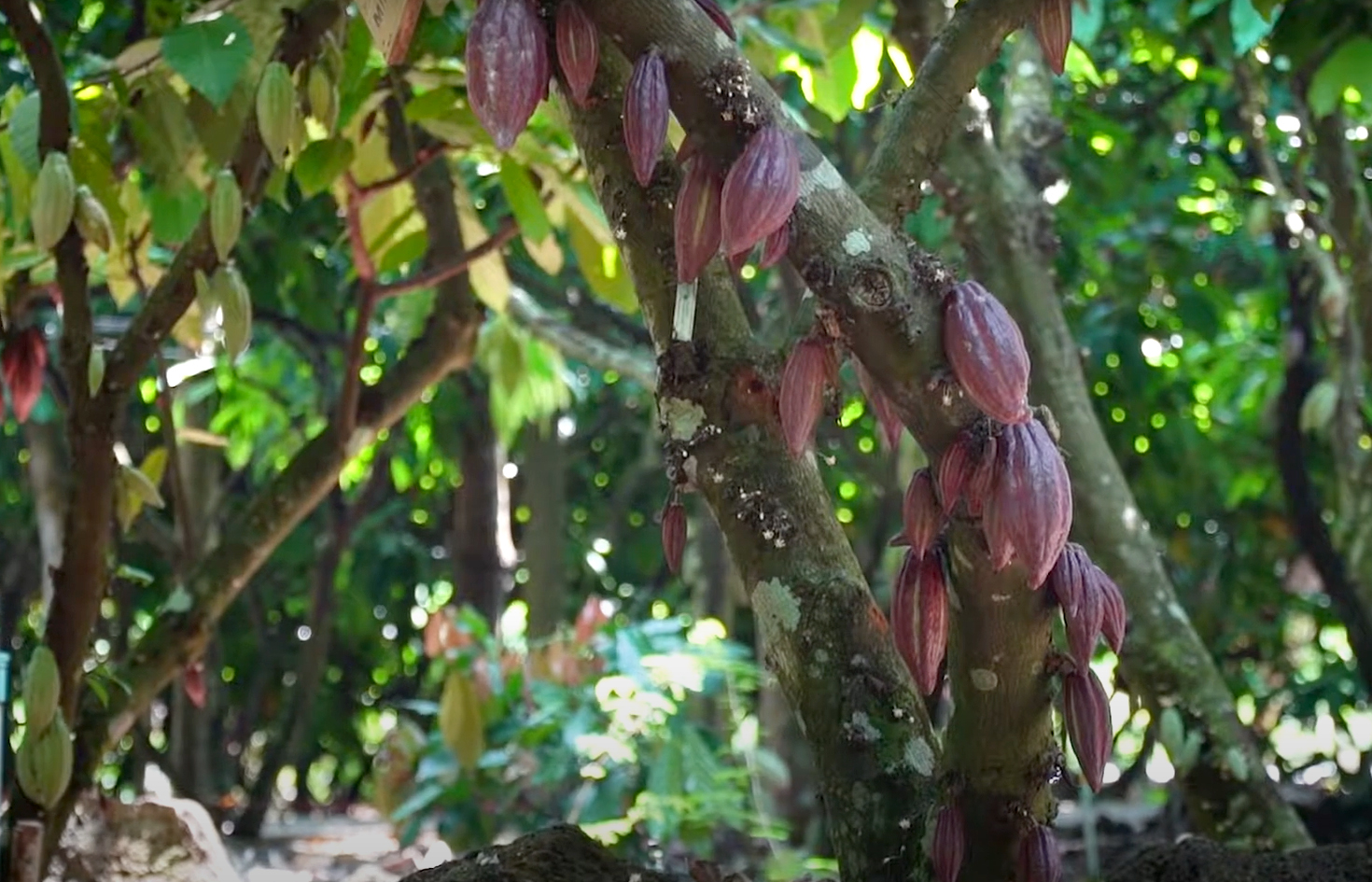
Produced from UTZ-certified cocoa beans and having a delicate flavor, Trong Duc Cocoa's chocolate has conquered customers via many products such as bitter chocolate, coffee bean chocolate, tropical almond bean chocolate, green tea chocolate, cashew chocolate, and plain chocolate.
Trong Duc Cocoa's cocoa powder is extracted from the best cocoa beans and has a passionate and seductive flavor, with product lines such as Bungo 3-in-1 cocoa powder, pure Bungo cocoa powder, and Sachi cocoa powder.
Trong Duc Cocoa's cocoa wine is extracted from cocoa combined with a family recipe, resulting in high-grade bottles of wine. Cocoa wine has a vibrant mahogany brown color and a spicy taste that blends perfectly with the natural sweetness of cocoa, which has “captivated” many people who enjoy it right from the first sip.
With high quality, unique and distinct flavors, and using local raw materials, Trong Duc Cocoa's bitter chocolate, pure cocoa powder, and Bungo 3-in-1 cocoa powder products have been granted 4-star OCOP certifications.
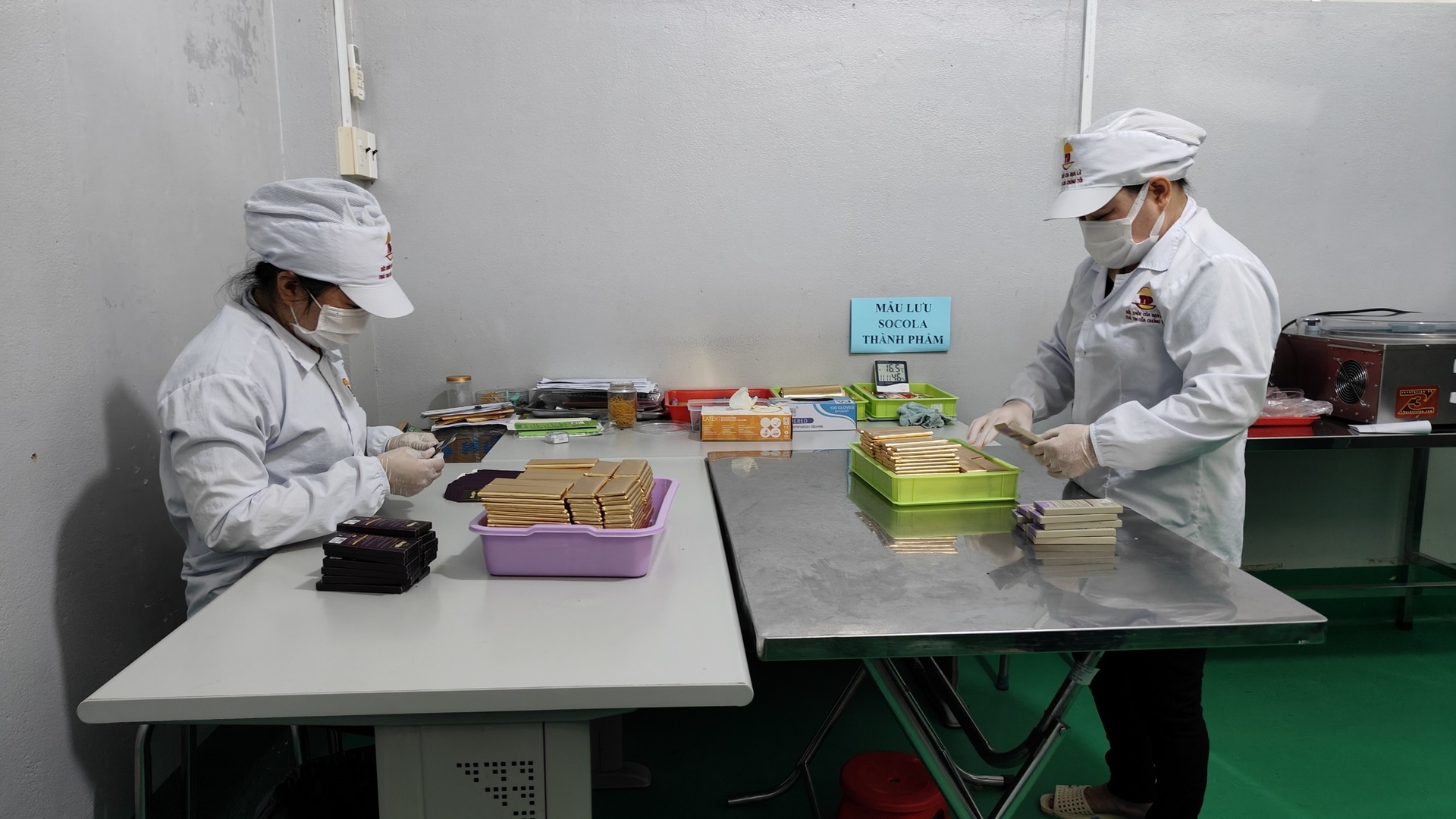

Going deeper into processing cocoa products, Trong Duc Cocoa has built a brand, conquered domestic consumers, and exported to many markets, including demanding markets.
In 2014, Trong Duc Cocoa found a reliable partner from Japan, which is Ca Cao Ken Co., Ltd., an enterprise producing and trading traditional confectionery in Japan. Speaking to the press, Mr. Nakano Toshimi, General Director of Ca Cao Ken Co., Ltd., said that he spent 8 years learning about Vietnamese cocoa, including Dong Nai cocoa, before deciding to cooperate with Trong Duc Cocoa. Mr. Nakano Toshimi judged that maybe, due to the soil factor and especially Trong Duc's technique of fermenting cocoa beans, Dong Nai cocoa beans have their own characteristics of being very fragrant and having a sour and less bitter taste. These are the factors that make a type of chocolate that does not cause boredom when eating.
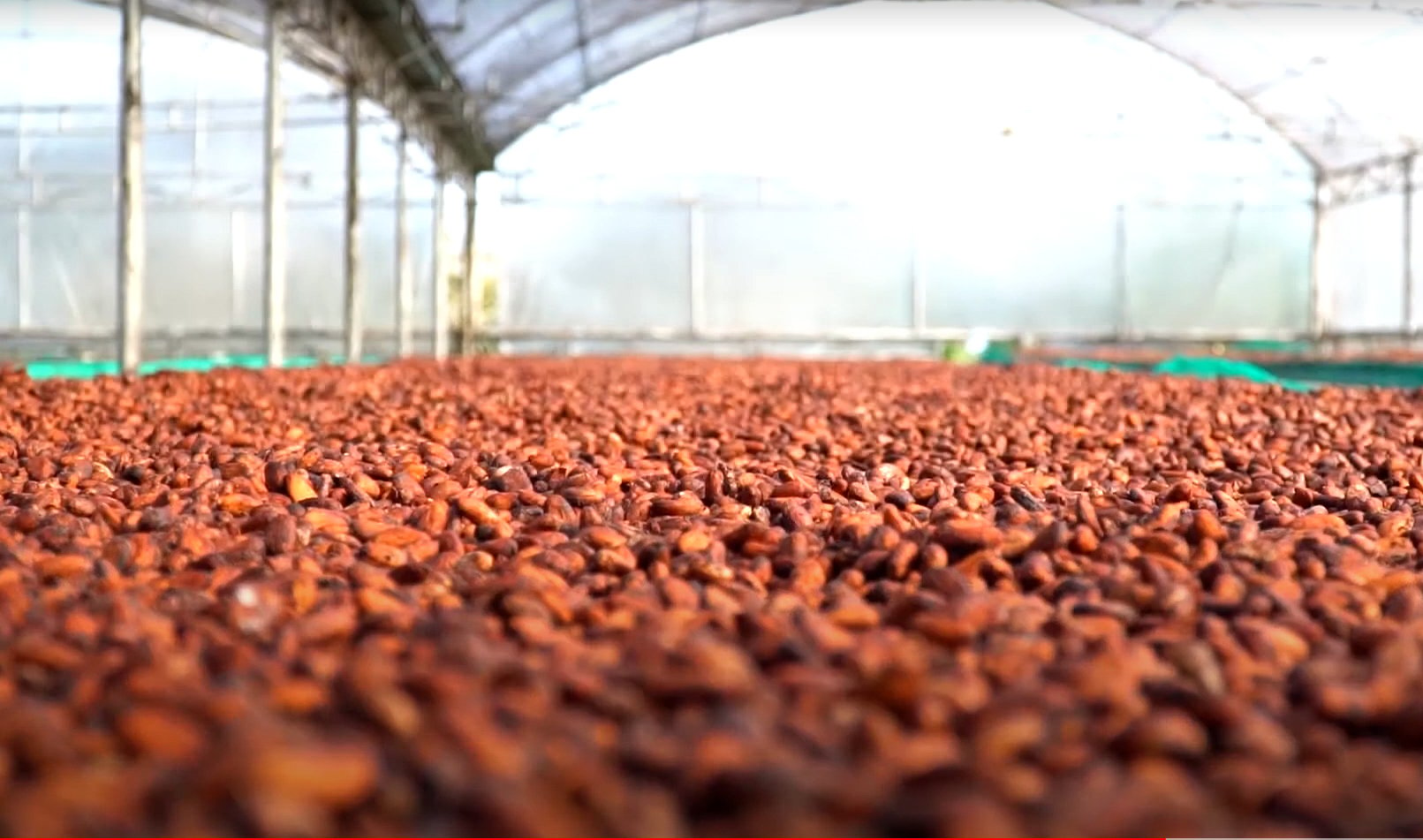
To accelerate cooperation in promoting and exporting chocolate and cocoa products from Dong Nai to the world market, in August 2015, Kenkyusho Company, a joint venture between Trong Duc Cocoa and Ca Cao Ken Co., Ltd., was established in Singapore. Of which, Trong Duc Cocoa specializes in producing raw materials and processing cocoa products, while Ca Cao Ken Co., Ltd. is responsible for market development. Accordingly, the joint venture develops both the Japanese market and the world market in parallel. The strong and distinct product line that the two sides focus on investing in production and marketing is chocolate products handcrafted from cocoa beans. Beside that are Trong Duc Cocoa’s distinct, high-quality products, such as cocoa wine, cocoa powder, etc.
With a solid foundation, Trong Duc Cocoa has invested millions of dollars in processing factories and raw material areas. In addition to cocoa beans, many deeply processed products from Trong Duc, such as chocolate, cocoa powder, etc., have been exported to demanding markets such as Japan, South Korea, etc.
“The development direction of Trong Duc Cocoa is to target the high-end and premium markets in which the business competes with quality and taste, not with cheap prices. This is also the foundation for the business to build its own brand for Dong Nai cocoa in particular and Vietnamese cocoa in general in the international market," Mr. Dang Tuong Khanh emphasized.


In order to maintain a source of good-quality cocoa raw materials, for nearly 20 years, Trong Duc Cocoa has always persevered with accompanying Dong Nai farmers in developing local cocoa trees. The company has supported local farmers to link production and consumption of cocoa products over a large area, thereby creating large outputs and uniform quality. These factors have helped Trong Duc Cocoa improve its competitiveness and successfully implement production and business plans. At the same time, help farmers have stable jobs, get rich from their land, and create maximum income from cocoa trees.
Mr. Dang Tuong Khanh shared, "We sign contracts with farmers, guide farming techniques so that farmers can produce cocoa fruits that meet the standards of importers, and purchase products at more attractive prices than other crops in the region such as cashew and rubber, etc., to create a sustainable, high-quality raw material area. The company sets the criteria to ensure the rights of farmers. The company may lose money, but it will not let farmers lose money. We wish to convince farmers to believe in and unanimously implement the program, not just be purely constrained by contract or law."
Trong Duc Cocoa's association with farmers has made an important contribution to the sustainable development of cocoa trees in many districts of Dong Nai province. Besides, the company has also participated in developing cocoa trees in two neighboring provinces, namely Lam Dong and Binh Thuan. Thanks to that, as of now, Trong Duc Cocoa has built sustainable raw material areas in the three districts of Dinh Quan, Tan Phu, and Thong Nhat of Dong Nai province, as well as in Lam Dong and Binh Thuan, with a total area of 1,200 hectares.

To increase benefits for farmers, in cooperation with Ca Cao Ken Co., Ltd., Trong Duc has implemented an additional program connecting consumers with farmers through the form of "selling" fresh cocoa trees to customers over the past years. Accordingly, customers choose cocoa trees and then order to "buy" them according to each harvest crop and pay a fee to the farmers for tree management and care. Farmers are responsible for following the safety technical procedures committed to customers and regularly filming and taking photos to update customers on the process of tree growth, flowering, fruiting, harvesting, etc. With cocoa beans harvested from these trees, Trong Duc will be responsible for processing and delivering them to customers.
The above-mentioned model of "selling" cocoa trees has attracted the participation of many customers, including customers from Japan. Many Japanese customers have booked tours to go to the cocoa garden in Dong Nai to witness firsthand the scene of farmers harvesting cocoa, then enter Trong Duc's processing factory to watch workers select cocoa beans of the best quality and process chocolate by manual method.
According to the Vietnam Coffee-Cocoa Association (VICOFA), cocoa trees used to have a period of strong growth in Vietnam from 2001 to 2012. At that time, there were many funding projects for cocoa development in Vietnam from non-governmental organizations and poverty eradication projects. For example, Success Alliance's project was implemented in the Mekong Delta, Southeast, and Central Highlands provinces from 2004 to 2006. Switzerland’s Helvetas organization implemented UTZ standards for cocoa products. In 2012, the cocoa area in Vietnam reached up to 22,700 hectares.
After the funding projects ended, cocoa area and output in Vietnam decreased sharply because cocoa trees had low productivity, so the economic efficiency was much lower than other crops. Cocoa does not have a certain season, making harvesting, pre-processing, and fermentation take place all year round, so it is not unattractive to farmers.
Not stopping there, since 2019, Trong Duc has organized an eco-tourism model called "Cocoa World" right in the raw material area and processing place. Tourists can visit cocoa gardens, from the fruit harvesting stage to the pre-processing steps to the stage of processing wine, chocolate, and other products from cocoa fruits. Tourists have the opportunity to enjoy specialties made from cocoa fruits, buy cocoa products as gifts, etc. With this eco-tourism model, Trong Duc aims to accelerate the promotion of the company's products and brand. Trong Duc cocoa garden is being chosen by travel agencies in Ho Chi Minh City and the provinces of the Southeast, South Central, and Central Highlands as an important stop on tours bringing tourists to Dong Nai.
Currently, the whole country still has about 4,000 hectares of cocoa. Of which, the Central Highlands provinces have 1,680 hectares, the Southeast at 1,177 hectares, and the Mekong Delta provinces at 1,117 hectares. The current national cocoa output reaches about 4,500 tons.
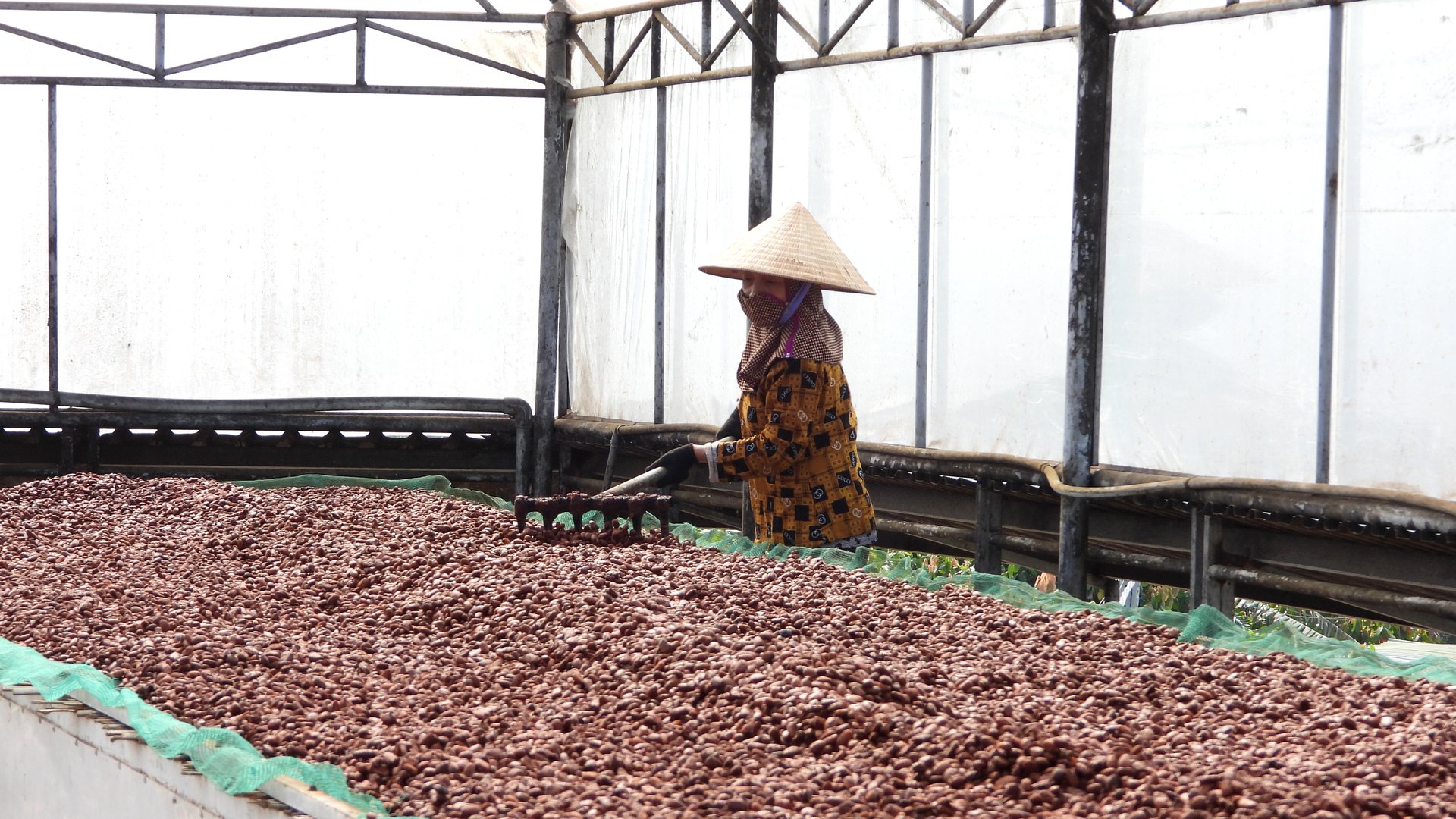
Although facing many difficulties, VICOFA judges that the development of Vietnamese cocoa in the coming time will have many advantages. First of all, the world demand for cocoa is increasing. Cocoa productivity is gradually improving, and cocoa processing is of interest to many domestic and foreign enterprises. A number of organizations, domestic enterprises, and FDI enterprises are building concentrated cocoa production areas on a large scale.
Although the output is not large, Vietnamese cocoa is highly appreciated in the world market. In 2016, the International Cocoa Council ranked Vietnam in the group of cocoa-growing countries with good-tasting cocoa products. Thereby, Vietnam has become the 23rd country to be listed as a cocoa producer with good flavor out of a total of about 60 cocoa-producing countries in the world.
In Asia, Vietnam is the second country after Indonesia on the list of countries producing cocoa with good taste, but up to 40% of cocoa output is recognized as having good taste, while Indonesia only has a 1% rate. This difference, in addition to the soil factor, also comes from the natural fermentation method to create uniqueness. It is the process of fermenting cocoa, roasting, and grinding beans to bring out the characteristic fruity flavor inherent in Vietnamese cocoa beans.
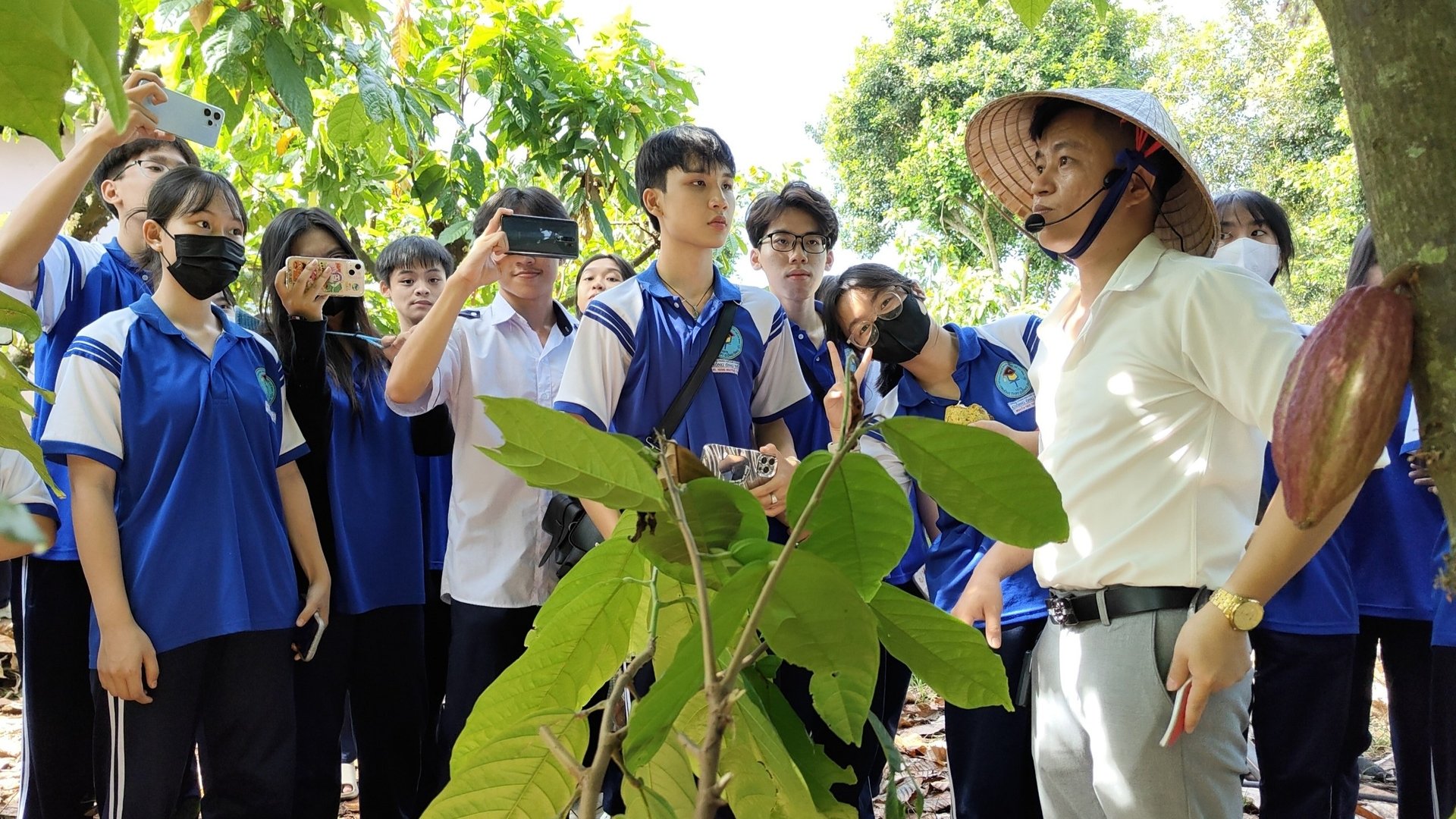
Content: Thanh Son – Tran Trung
Photo: Thanh Son – Tran Trung
Translated by: Huyen Vu Thu



